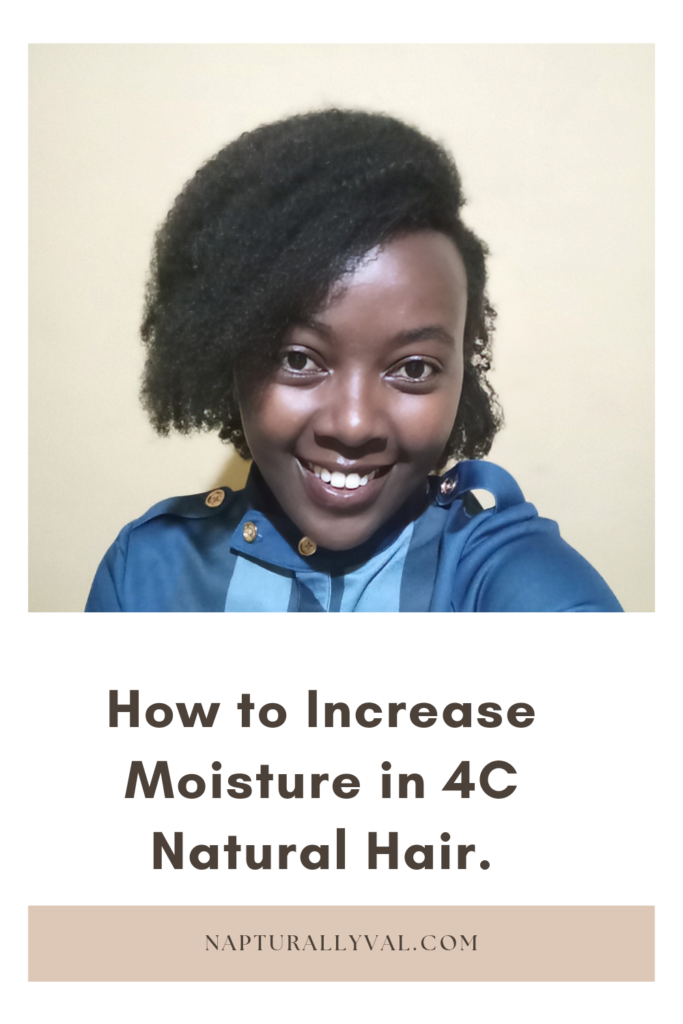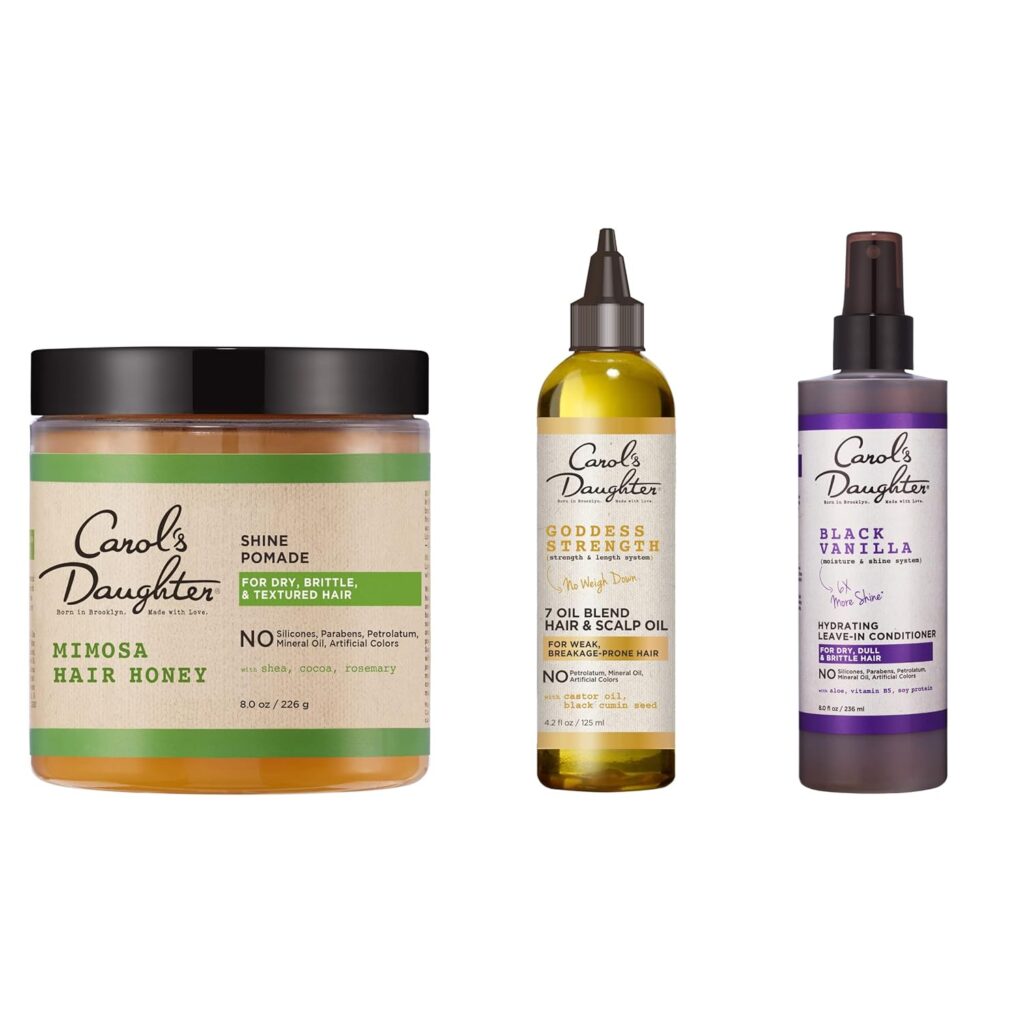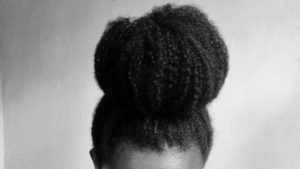If you’re a 4C natural, you probably know that moisture is the holy grail of hair care. Maintaining moisture in 4C hair can be a bit of a challenge, but once you crack the code, your hair will flourish like never before. Due to the tightly coiled structure of 4C hair, it tends to dry out more quickly than other hair types. That’s because the natural oils from your scalp have a harder time traveling down the strands. But don’t worry—with the right techniques and products, you can keep your 4C hair moisturized, soft, and manageable.
In this guide, we’ll explore tips, tricks, and products to increase moisture in 4C natural hair. Whether you’re newly natural or looking to improve your current routine, these strategies will help you achieve healthy, hydrated hair.
Feel like your hair has been the same length forever, I’ve an Ebook that will help you grow your hair healthier, longer and thicker. Grab your copy here… Also, check out all the Ebooks,guides and journals that will go a long way in your hair care journey here.

Table of Contents
How to Instantly Increase Moisture in 4C Hair.
1. Understand the Porosity of Your 4C Hair
Before diving into how to increase moisture, it’s crucial to understand your hair’s porosity. Hair porosity refers to how well your hair absorbs and retains moisture. There are three types: low, medium, and high porosity.
- Low porosity hair has tightly closed cuticles, making it hard for moisture to penetrate but also hard for it to escape once it’s in. If you have low porosity hair, it may take longer for your hair to absorb water or products, but once it does, you need to focus on sealing that moisture in.
- High porosity hair, on the other hand, has open cuticles, which means it can absorb moisture quickly, but it loses it just as fast. High porosity hair requires extra layers of moisture and sealants to prevent quick evaporation.
Once you know your hair’s porosity, you can tailor your moisturizing routine accordingly.
2. Moisturize on Damp Hair
One of the easiest ways to ensure your hair stays hydrated is to apply moisture products when your hair is damp. When your hair is wet, the cuticles open up, allowing moisture to penetrate more deeply. Start with a good hydrating leave-in conditioner or moisturizer on damp hair right after washing or spritzing it with water.
For low porosity hair, use warm water or apply your products after a warm shower to open the cuticles. High porosity hair, on the other hand, needs thicker, creamier moisturizers to keep the cuticles sealed.

3. Layer Your Products: The LCO or LOC Method
The LOC (Liquid, Oil, Cream) or LCO (Liquid, Cream, Oil) method is a game-changer for locking in moisture in 4C hair. Both methods involve layering products in a way that maximizes moisture retention.
- L stands for Liquid, typically water or a water-based leave-in conditioner. This hydrates the hair.
- O stands for Oil, which helps seal in the liquid. Oils like coconut oil, olive oil, or grapeseed oil are great for this step.
- C stands for Cream, which acts as a thicker sealant that helps lock in moisture for longer periods.
If you find the LOC method doesn’t work as well for you, try switching to the LCO method. In this method, you apply the cream after the liquid, and then seal everything with oil. The difference is subtle, but sometimes that small change can make a big impact depending on your hair’s porosity.
4. Incorporate Humectants Into Your Routine
Humectants are ingredients that draw moisture from the environment into your hair, which is especially important if you live in a humid climate. Common humectants include glycerin, honey, aloe vera, and propylene glycol. Incorporating products with humectants into your routine will help maintain moisture levels in your hair throughout the day.
Top Humectant-Based Products for 4C Hair:
- Creme of Nature, Knot Away Leave in Detangler: Contains honey for hydration and moisture retention.
- Mielle Organics Pomegranate & Honey Leave-In Conditioner: Infused with honey and glycerin, this leave-in conditioner helps keep your hair soft and hydrated.

5. Deep Condition Regularly
Deep conditioning is a critical step for moisturizing 4C hair. It penetrates deep into the hair shaft, delivering moisture and nutrients where they’re needed most. The trick is to be consistent. Make deep conditioning a weekly or twice a month part of your hair care routine to ensure that your hair is getting a deep dose of moisture.
For extra moisture, use a heat cap or sit under a hooded dryer while you deep condition. The heat helps open up the hair cuticle, allowing the deep conditioner to penetrate more effectively.
Recommended Deep Conditioners for 4C Hair:
- SheaMoisture Manuka Honey & Mafura Oil Intensive Hydration Masque: Known for its hydrating and strengthening properties, this deep conditioner is a lifesaver for dry 4C hair.
- TGIN Honey Miracle Hair Mask: This rich, creamy mask infused with honey provides intense moisture, leaving your hair soft and manageable.
6. Use Oils to Seal in Moisture
After moisturizing, it’s important to seal in the moisture with oil. Oils act as a barrier, preventing moisture from evaporating too quickly from your hair. Depending on your hair’s porosity, you might choose different oils:
- Low porosity hair benefits from lighter oils like argan oil, grapeseed oil, or sweet almond oil. These oils penetrate the hair shaft without weighing it down.
- High porosity hair can handle heavier oils like castor oil, shea butter, or avocado oil, which provide a thicker seal to lock in moisture.
Best Oils for Sealing in Moisture:
- Jamaican Black Castor Oil: Great for high porosity hair. It’s thick, so it provides a strong sealant.
- Argan Oil: A lightweight oil that penetrates the hair shaft, making it great for low porosity hair.

7. Avoid Overusing Protein-Based Products
While protein treatments are necessary for maintaining strong hair, too much protein can actually lead to dryness and breakage. This is especially true for 4C hair, which already struggles with retaining moisture. Make sure to balance protein treatments with regular moisture treatments.
If your hair starts feeling stiff or brittle, you might be overdoing it with the protein. Switch to more moisturizing products for a few weeks to restore balance.
8. Protect Your Hair at Night
Moisture can quickly escape from your hair if it’s not protected, especially while you sleep. Cotton pillowcases and sheets can absorb the moisture from your hair, leaving it dry and brittle in the morning.
To combat this, always wear a satin or silk bonnet to bed. Alternatively, you can sleep on a satin or silk pillowcase, which is gentle on your hair and helps prevent moisture loss. This small step can make a huge difference in how long your hair retains moisture.
9. Protective Styling: A Moisture Retention Strategy
Protective styles like twists, braids, and bantu knots can help keep your hair moisturized by reducing daily manipulation and exposure to the elements. However, it’s important to moisturize your hair before installing a protective style and keep your hair hydrated while it’s in the style.
Spritz your hair with water or a leave-in conditioner every few days, and apply a light oil to seal in moisture. This will prevent your hair from drying out while in the protective style.
Best Products for Protective Styling:
- tgin Butter Cream Daily Moisturizer For Natural Hair: This butter cream provides long-lasting moisture and is perfect for protective styles like twists and braids.
- As I Am Double Butter Cream: A rich, moisturizing cream that keeps your hair hydrated and nourished while in protective styles.
10. Stay Hydrated and Eat a Balanced Diet
Moisturizing your hair starts from the inside. Drinking plenty of water and eating a diet rich in vitamins and minerals can significantly improve your hair’s ability to retain moisture. Foods rich in omega-3 fatty acids (like salmon and chia seeds), vitamins (like leafy greens), and healthy fats (like avocados) contribute to healthier, more moisturized hair.
Keeping 4C hair moisturized requires consistency and a solid understanding of your hair’s needs. By following these steps—deep conditioning regularly, using the LCO or LOC method, sealing with oils, and protecting your hair at night—you’ll notice a significant difference in your hair’s moisture levels. Every 4C hair journey is unique, so take your time finding the right products and methods that work best for you.



